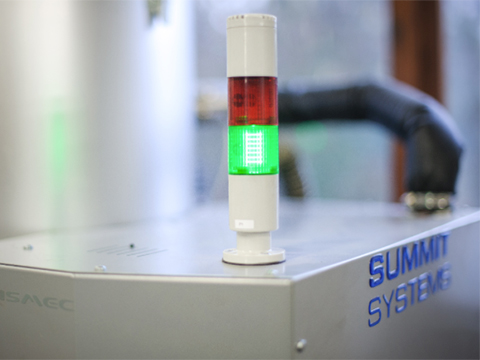Latest News

The role of robotics and automation in injection moulding
24/10/24 10:05
Injection moulding is the process of producing plastic parts in large volumes by using an injection moulding machine. Raw plastic is fed into a heated barrel, melted, and then injected into a mould cavity where it cools and hardens into the shape of the mould. This process is used to create parts and components for many industries, including automotive, electronics, medical, furniture, and much more.
One of the key differences between traditional injection moulding and automated injection moulding is that in conventional injection moulding, handling newly moulded parts can be challenging. Automated injection moulding uses robots equipped with pneumatic grippers or vacuum-based tools to gently and efficiently handle these delicate parts, reducing the risk of damage or distortion and enhancing precision in operations.
Plastic injection moulding machines are highly efficient and utilising robotics with the process can significantly boost overall productivity and profit margins. Being versatile, they play a crucial role in a wide range of tasks that streamline the manufacturing process and enhancing quality and efficiency.
Machine tending: One of the most common applications of robotics in plastic injection moulding is machine tending. Robots can be responsible for unloading finished parts from the injection moulding machine and preparing them for downstream processes. Before the use of robotics, these tasks would be labour-intensive, requiring workers to handle heat-sensitive materials with extreme care to prevent damage which could cause challenges and risk.
Insert moulding: Robots are also used to undertake more complex operations in the plastic injection moulding process such as insert fitting. Insert moulding involves embedding a metal object into the plastic during the mounding process. To do this, six-axis robots can be programmed to load these inserts (which could be a pin or blade) into the mould precisely.
Overmoulding: In overmoulding, separately moulded parts are combined (such as adding rubber grips to a toothbrush handle). Robots can automate this transfer which reduces labour costs and can enhance the overall quality of the product.
Post-moulding operations: Robotics also play a crucial role in undertaking process after a product has been moulded, offering greater precision and efficiency. This may include operations including consistent trimming, accurate dispensing of sealants, faster cycle times, picking, placing and welding operations.
All in all, robotics can boost production rates and reduce manual labour, delivering effective and reliable process.
Benefits of robots in plastic injection moulding
Automation is becoming increasingly utilised throughout the manufacturing industry, taking on aspects of the job and minimising requirements for manual operations. This can result in:
Faster production times - Robotics can move through processes repeatedly without interruption for longer than human workers, ensuring round-the-clock production. Delivering better per-unit output and enabling quicker order completion times.
Reduced labour costs - Robotic systems can take over tasks that have previously required multiple workers, enabling businesses to handle a greater volume of orders with less staff, resulting in lower overall project expenses.
More sustainable fabrication - Automated machines produce high volumes of products with a minimal error margin, this precision in manufacturing contributes to more sustainable operations by minimising material waste.
As the industry continues to evolve, so does the use of robotics for automation. In the future, plastic injection moulding will be expanding into more areas like recycling. New advancements in technology are appearing where robots can efficiently remove sprue or runner waste from the plastic injection moulding machine and place them into a granulator for recycling. This not only reduces waste, but also improves cycle times.
Integrating robots into these aspects of injection moulding enhances productivity, product quality, and sustainability.
